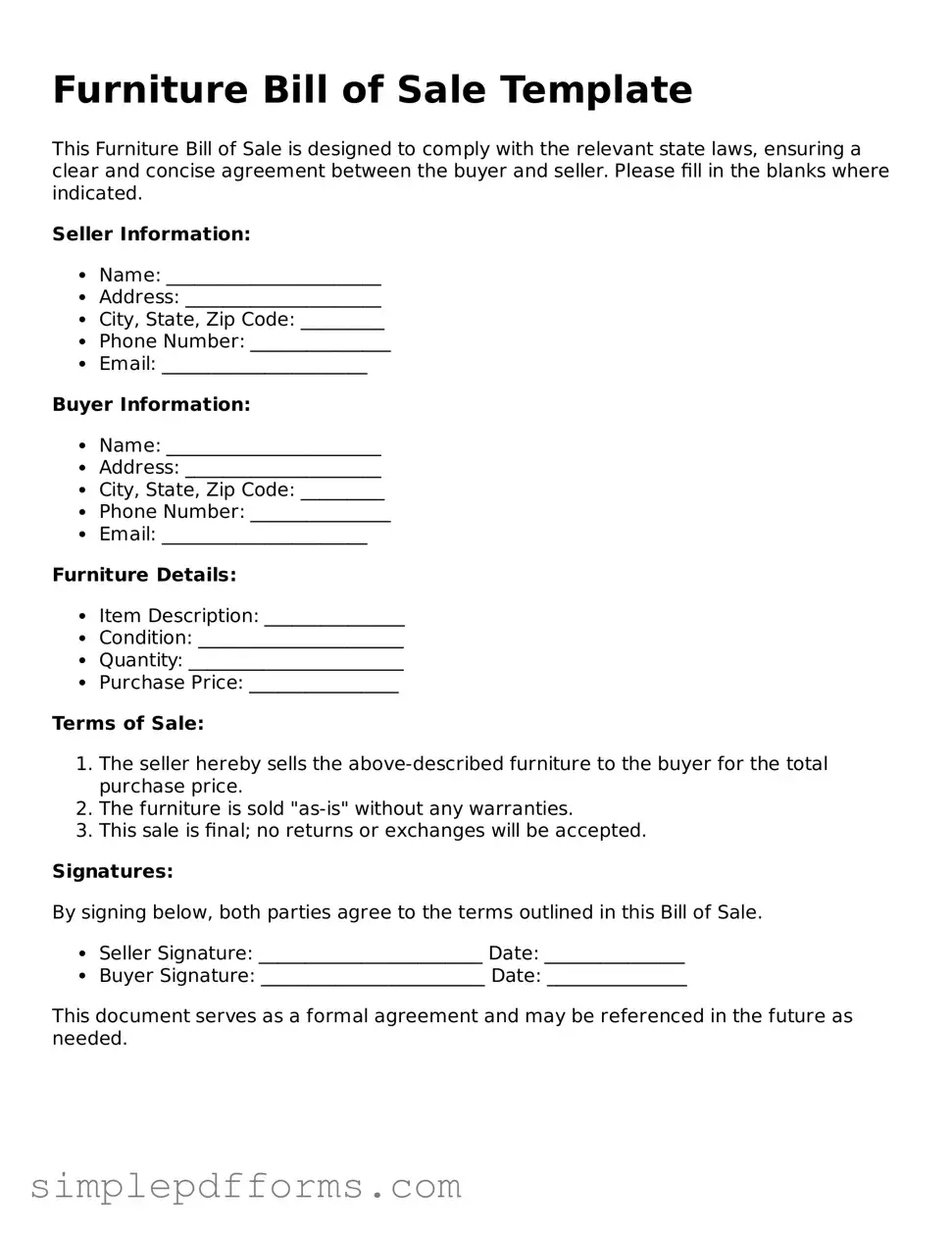When purchasing or selling furniture, completing a Furniture Bill of Sale form is a crucial step. However, many individuals make mistakes that can lead to confusion or even disputes later on. One common error is failing to provide accurate descriptions of the items being sold. Without clear details, such as the brand, model, and condition, it can be challenging to establish what was included in the sale.
Another frequent mistake involves neglecting to include the sale price. While it may seem obvious, omitting this information can create misunderstandings between the buyer and seller. It's essential to clearly state the agreed-upon amount to avoid any future disputes about payment.
Additionally, many people overlook the importance of both parties signing the document. A Furniture Bill of Sale is not legally binding unless it is signed by both the buyer and the seller. Without signatures, there may be no proof of the transaction, leaving either party vulnerable to claims of non-payment or non-delivery.
Some individuals also forget to include the date of the transaction. This detail is vital as it establishes when the sale occurred. Without a date, it becomes difficult to resolve any issues that may arise later, such as warranty claims or disputes about the condition of the furniture at the time of sale.
Another mistake involves failing to provide contact information. Including phone numbers and addresses for both parties ensures that they can easily communicate if questions or issues arise after the sale. This simple step can prevent misunderstandings and facilitate smoother transactions.
Moreover, people sometimes neglect to indicate whether the sale is final or if there are any warranties or guarantees. Clearly stating the terms of the sale protects both parties. If the seller offers a warranty, it should be explicitly mentioned in the bill of sale to avoid confusion later.
Lastly, many individuals do not keep a copy of the completed Furniture Bill of Sale. It is essential for both the buyer and seller to retain a copy for their records. This document serves as proof of the transaction and can be invaluable in case of disputes or if either party needs to reference the agreement in the future.
